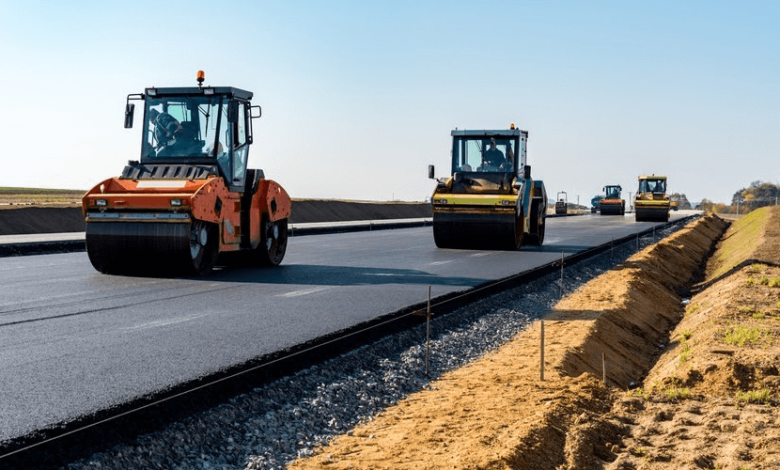Understanding Road Base Material: Foundation of Strong Infrastructure

In the world of civil engineering and road construction, building a strong and durable surface begins with selecting the right road base material. This foundational layer is more than just compacted stone or gravel—it plays a vital role in ensuring the long-term stability, load-bearing capacity, and safety of roads and highways.
Whether you’re constructing a rural gravel road, a multi-lane highway, or a commercial parking lot, understanding the characteristics and function of road base material is essential for efficient project execution. In this article, we’ll explore what road base material is, the different types available, how it’s used, and why it’s critical to modern infrastructure.
What is Road Base Material?
Road base material refers to the aggregate layer placed between the subgrade (natural soil) and the surface layer (asphalt or concrete) of a roadway. Its main function is to distribute the loads from vehicular traffic evenly over the subgrade while also providing drainage, stability, and support.
This material is typically composed of a mix of crushed rock, gravel, sand, and sometimes recycled materials such as reclaimed asphalt pavement (RAP) or crushed concrete. The combination is chosen to ensure adequate compaction and strength to prevent road deformation over time.
Importance of Road Base in Construction
The performance and lifespan of a road depend heavily on the quality of the road base material. Here are some reasons why it is a crucial element in road construction:
- Load Distribution: It spreads out the weight from vehicle tires, preventing damage to the underlying soil.
- Drainage: A well-designed road base allows water to pass through or around it, avoiding water accumulation that can weaken the structure.
- Frost Protection: In colder climates, road base material prevents frost heave by minimizing moisture content and insulating the subgrade.
- Durability: It increases the lifespan of the surface layer by providing a stable platform.
Without a properly constructed base, the road surface is more prone to cracks, potholes, rutting, and early failure, leading to expensive repairs and maintenance.
See also: Elevating Gym Standards: The Rise of Commercial Treadmills
Common Types of Road Base Materials
There are several different materials that can be used as a road base, depending on the project’s requirements, location, budget, and environmental conditions. Below are some of the most common:
1. Crushed Stone
It includes various sizes of angular rock particles, usually ranging from 1.5 inches to dust. Crushed stone is ideal for heavy traffic areas.
2. Gravel
However, it may not compact as tightly as crushed stone.
3. Recycled Concrete Aggregate (RCA)
An eco-friendly and cost-effective option, RCA is made from crushed and processed concrete from demolition sites. It performs similarly to traditional aggregates and is used increasingly in urban road base construction.
4. Reclaimed Asphalt Pavement (RAP)
RAP is recycled asphalt removed from old roads, crushed, and reused as road base material. It offers good stability and reduces waste in landfills.
5. Limestone or Caliche
Used in areas where it’s naturally available, these types of sedimentary rocks are effective for base construction due to their binding properties when crushed and compacted.
6. Sand-Crushed Rock Mix
A blend of fine sand and crushed rock provides excellent gradation and compaction, commonly used in base courses for highways and airstrips.
Characteristics of a Good Road Base Material
Not all materials are suitable for road base. The chosen aggregate must meet specific standards to ensure performance under traffic loads. A high-quality road base material should possess the following characteristics:
- Durability: Resistance to weathering, crushing, and degradation under pressure.
- Compaction: Ability to be compacted into a stable, dense mass.
- Moisture Resistance: Tolerance to water without weakening or swelling.
- Cohesion: Some level of natural binding ability or with the addition of stabilizers.
Construction Process Using Road Base Material
Laying a proper base is just as important as choosing the right material. Here is the general process followed during base construction:
1. Subgrade Preparation
The natural ground or soil is first excavated and graded to the required level. Poor soils may be stabilized or replaced.
2. Layer Placement
The road base material is then evenly spread in layers, usually 4 to 12 inches thick depending on the road design.
3. Compaction
Each layer is compacted using rollers or vibratory equipment to achieve the required density.
4. Testing
Quality control tests such as Proctor density, CBR (California Bearing Ratio), and plate load tests are performed to confirm strength and stability.
Stabilizing Road Base Material
In some cases, stabilizers are added to the road base to enhance performance:
- Cement stabilization increases load-bearing capacity and water resistance.
- Lime stabilization is used in clay-rich soils to reduce plasticity and swelling.
- Bituminous or asphalt stabilization offers flexibility and waterproofing.
These additives are especially useful in areas with weak subgrades or heavy rainfall.
Cost of Road Base Materials
- Crushed Stone: $25–$35 per ton
- Gravel: $15–$25 per ton
- Recycled Concrete: $10–$20 per ton
- RAP: $15–$30 per ton
Labor, equipment rental, and testing add to the total cost. However, investing in good base materials can save money by reducing maintenance and extending pavement life.
Environmental Considerations
Modern construction emphasizes sustainability, and the use of recycled materials like RAP and RCA aligns with these goals. Proper selection and use of road base materials also minimize erosion, reduce urban heat islands, and support stormwater management.
Additionally, geosynthetics like geotextiles are often placed beneath the base to improve separation, filtration, and drainage, further enhancing the overall performance of the pavement system.
Final Thoughts
Choosing the right road base material is not merely a step in the construction process—it’s the foundation upon which the safety, durability, and efficiency of roads depend. From crushed stone to recycled aggregates, the options are varied and must be carefully evaluated to suit each project’s unique demands.
Whether you’re a contractor, civil engineer, or policy planner, understanding the materials beneath the road surface empowers better decisions that impact both budgets and long-term infrastructure performance. Investing in high-quality base materials ensures smoother roads, fewer repairs, and safer travel for everyone.




